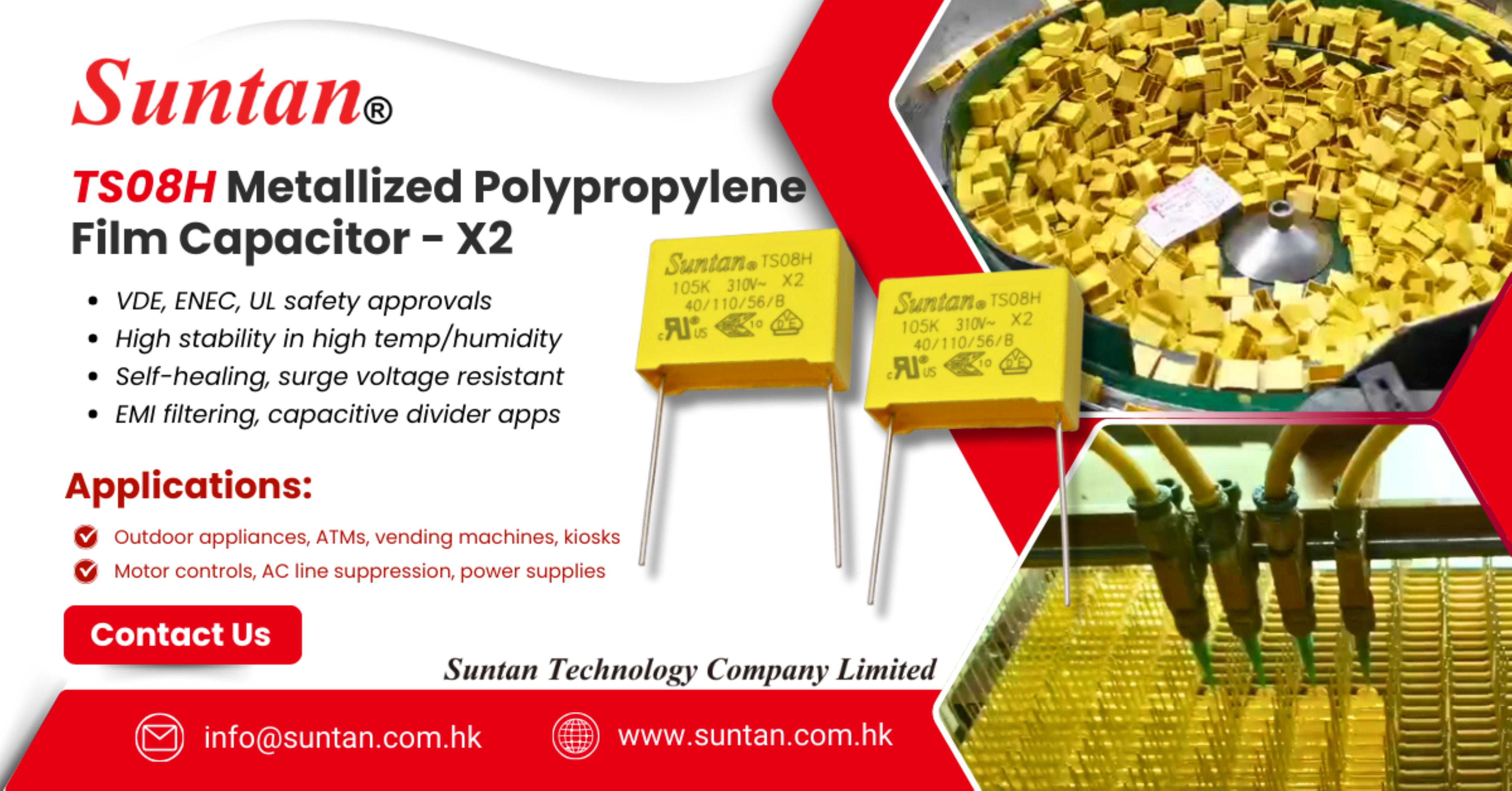Why TS09F AC Film Capacitor Excels in High Voltage Environments
Suntan Technology Company Limited---- All Kinds of Capacitors
Explore the advantages of Suntan’s metallized polypropylene film capacitor for stable, high-voltage AC filtering.
In high-voltage AC systems, reliability and stability are essential. Whether you're designing EMI filters for household appliances or developing industrial-grade AC power circuits, the choice of capacitor can significantly affect performance and longevity. Suntan’s TS09F Metallized Polypropylene Film Capacitor is specifically engineered for AC filtering, offering consistent stability and high-voltage endurance under demanding electrical and environmental conditions. Polypropylene dielectric provides low loss, high insulation resistance, and stable capacitance even under stress. Withstands high-temperature and electrical load conditions using flame-retardant materials. Ideal for EMI/RFI suppression in appliances and power circuits due to consistent performance across frequencies. Compact footprint while maintaining strong filtering capability in size-sensitive layouts. Suntan has a longstanding reputation for producing high-quality passive components. The TS09F series continues that tradition with a focus on performance consistency, application flexibility, and supply reliability for global customers.Key Technical Highlights
Why It Excels in High-Voltage Environments
1. Metallized Polypropylene Film Ensures Stability
2. Robust Build for Long-Term Endurance
3. Effective EMI Suppression
4. Space-Efficient with High Reliability
Typical Applications
Why Choose Suntan TS09F?
Learn More or Request a Sample
All Kinds of Capacitors – Your Trusted Partner in Electronic Component


